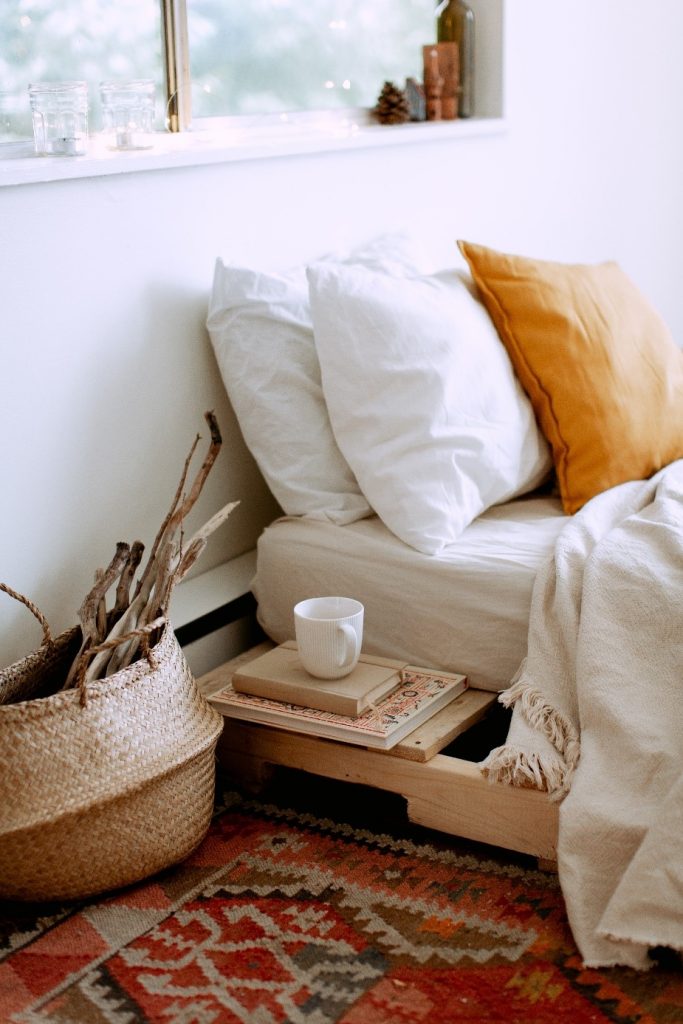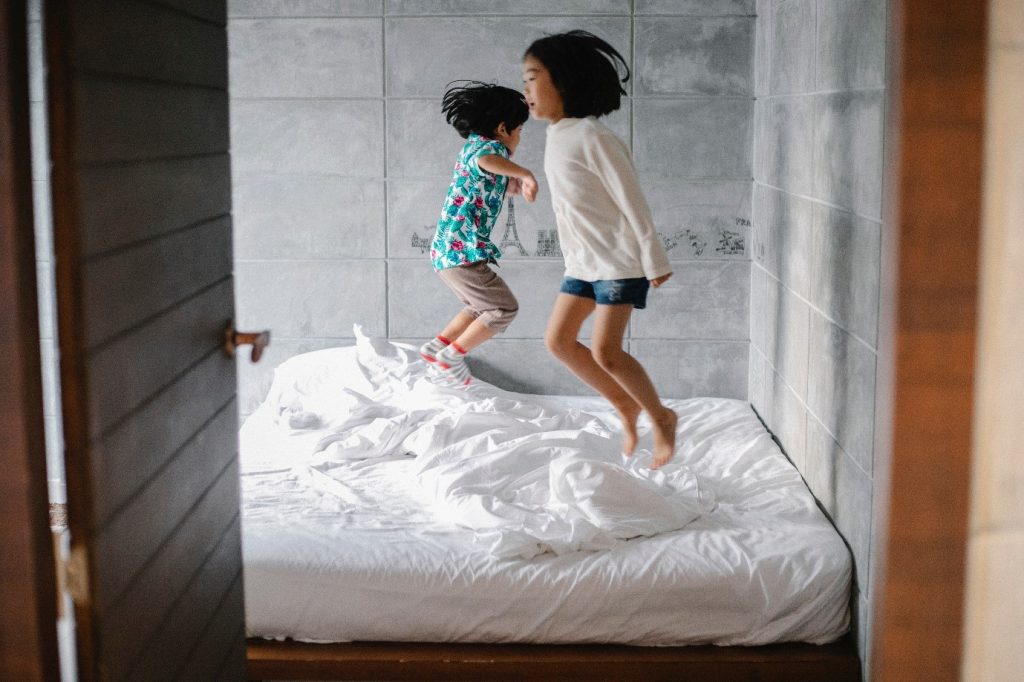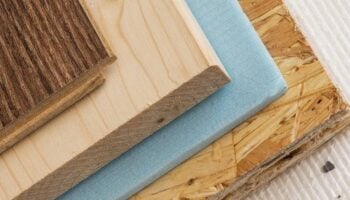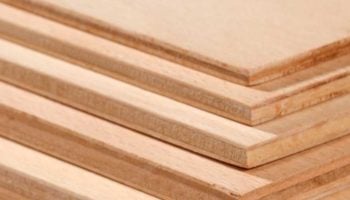We've independently reviewed this article to make sure it's as accurate as we can make it.
To find out more about our article creation and review process, check out our editorial guidelines.
Do you find it hard to stay asleep, or do you keep waking up with neck and back pain?
Unfortunately, I’ve been there too. While you might blame age, children, or stress, the most likely culprit is a sagging mattress.
But, the good news is that you’ve come to the right place to fix this issue.
Plywood can extend the life of your mattress and ensure a good night’s sleep. To fix your sagging mattress, you’ll just need to measure it, place the plywood sheets, and test it.
In this article, we’ll also explain why your mattress is sagging and compare the differences between plywood and other materials.
Read on to take your bed from bumpy to comfy in under five minutes!

How To Use Plywood to Fix A Sagging Mattress? 3 Simple Steps
It doesn’t matter if you’re dealing with broken springs or old age, you can still extend the life of your mattress by using a plywood plank under the sagging mattress.
But before you plunder your garage or purchase a plywood sheet, make sure that sagging is the issue.
To do this, remove the sheets and protector and inspect the mattress. Look for any dips in the middle or on the side. Lie in a few places and compare the firmness.
If you can’t detect the sag, place a ruler or rod on the surface. You’ll see a gap where the mattress isn’t level. This occurs where people sleep (or spoon!) the most. Once you’ve identified where it is, you’re ready to take action.
A note of advice: if you’ve got an innerspring, water, or air bed, plywood won’t fix the issue. Speak to the dealer or manufacturer for guidance.
#1 Take Measurements
Before doing anything else, please measure your bed base and see if you’ve got a plywood sheet that fits its dimensions.
If not, order one from your home improvement center and get it cut to size.
AB or BC soft plywood is best. Make sure it’s at least three-quarters of an inch thick, or it won’t support the weight of the mattress or its users.

#2 Place the Plywood
With assistance, lift your mattress to expose the box spring base or frame.
Then, place the sheet across the width of the bed so that it fits neatly. If you’re using planks, make sure they’re evenly spaced.
#3 Test It!
Place the mattress on the plywood and test comfort and movement. Listen for any bending or creaking, if there’s no sound, the planks have been correctly placed.
You should also notice that the sag has instantly diminished or disappeared altogether.
That’s all there is to it! Now to cover a few frequent common issues and questions.
Can You Use Plywood on Bed Slats?
When bed slats are old or overused, they can lose their ability to support the mattress.
A plywood sheet can easily be placed over them to remedy the issue. Alternatively, you could replace the bed slats with plywood slats. Just get them cut them to size and position accordingly.
Again, make sure the slats are at least three-quarters of an inch thick to ensure resilience.
Plywood vs Other Sagging Mattress Fixes
If you don’t want to use plywood, there are other ways to fix your sagging mattress.
They don’t provide the same support, but they allow you to sleep comfortably until you can find a more permanent solution.
These are:
Mattress Toppers
Toppers are a common solution for sagging mattresses. Available in different sizes and thicknesses, they’re made of memory foam or microfiber and provide good support for your back.
Toppers are also known for their health benefits, such as reducing your body temperature and enhancing sleep quality.
One of the issues with toppers is that they can be too soft for sleepers who prefer a firm base. Test them out to work out which is best for your needs. Also, if your mattress has deep sagging, toppers won’t offer much support.
An important thing to keep in mind is that toppers add height to your mattress. This can make it hard to fit your usual bed linen. As a result, you may need to upgrade to a larger base sheet or coverlet.
Using Pillows
Pillows are the quickest fix but are not recommended for long-term use.
Find some of your thinnest pillows and place them over the sagging area. Then, secure them with a mattress cover and place your fitted sheets on top.
That’ll make you more comfortable while you find a better solution, like replacing the box springs, using plywood, or buying a new mattress.
Plywood Considerations
While using plywood under a sagging mattress is a great way to improve the situation, it’s not a permanent solution.
Your mattress will eventually continue to sag, and your support base will no longer be effective. That’s when you need to invest in a new mattress.
Another issue with plywood sheets is that they prevent the mattress from breathing. This can result in mold or mildew, which can weaken the mattress further.
To prevent this from happening, opt for individual planks that are evenly spaced on the base.
This allows airflow and dry any moisture under the mattress.
Why Does a Mattress Sag?
It doesn’t matter if you buy a premium brand or follow the manufacturer’s care instructions, daily use and the passage of time will cause your mattress to sag.
Here are some common reasons why a mattress can lose its buoyancy.
#1 Sleeping in the Same Spot
Everyone has a favorite side of the bed. Whether it’s the right, the left, or the middle, it can lead to uneven weight distribution that puts pressure on the internal support structure of the mattress.
This means that your mattress can lose its ability to properly support your body during sleep.
The best way to avoid this is to rotate your mattress every few months (unless you’ve got a custom mattress with lumbar support, in which case it won’t work). When rotating, do this in 180-degree increments, either clockwise or anticlockwise.
After you’ve done this, you can flip it and start again. This should ease the pressure and prevent stretching or compaction.
Alternatively, you can try sleeping on a different side of the bed – but this may not be an option if you’ve got a single bed, or you’re sharing with someone else!
#2 Poor Maintenance
Most people forget to look after their mattresses. Like kitchen appliances and furniture, it requires regular maintenance to keep it in tip-top condition.
Besides rotation, you need to observe good mattress hygiene.
Use a mattress protector and wash your sheets and bed wear weekly. Why? Because our bodies produce oils and dead skin cells that penetrate the mattress and weaken the mattress layers. This can make the mattress prone to sagging and discoloration.
If you have children or pets, make sure you use a waterproof cover to prevent unexpected accidents from seeping through. Not only can this damage your mattress, but it can cause odor and harbor bacteria.
It’s also important to cover and transport your mattress correctly if you’re moving. Bending or folding a mattress can damage its springs.
The best way to transport your mattress is on its side – with a waterproof cover – and make sure it’s firmly secured to the truck.
#3 Old Mattress
Depending on the brand, most mattresses can last 7–10 years before they lose their effectiveness.
This means that your mattress, even if properly maintained, will sag.
In that case, you have two options: buy a new mattress or use support for your mattress. The latter can be helpful if you want to get a few more years out of your mattress.
#4 Poor-Quality Mattress
Not all mattresses are equal.
When buying a mattress, make sure it’s made from high-quality materials by a reputable manufacturer. While you spend more money upfront, it’ll save you the hassle of buying a new mattress every few years.
On the other hand, if you’ve been given a second-hand mattress by a friend or family member, there may be damage or wear you’re unaware of – even if it’s a high-quality brand.
Test it beforehand to make sure it suits your needs. Remember, it may only have a few more years (or months!) left, so use a support base while you save up for a new one.
#5 Damaged Springs
Most mattresses sit on a box spring base. This helps elevate the bed, absorb shock, and reduce mattress wear.
With repeated use, a box spring can weaken and lose its capacity to lift the mattress. This can happen prematurely if you place too much weight on it or if your kids jump on the bed.

If your springs are damaged, the bed will squeak every time you move and there’ll be a noticeable sag. You’ll also see bowing across the base of the frame.
The solution is to replace the box spring base (which is often cheaper than buying a new mattress) or put temporary support under the mattress.
When Should You Get a New Mattress?
The answer to this question is simple: when plywood and toppers no longer work.
There comes a time when your mattress needs to be replaced. Yes, you can extract a few more years with plywood or toppers, but if sinking into your bed is more like sinking into quicksand, you’re doing more harm than good.
Buying a mattress can be expensive, but you can’t put a price on sleep quality. Studies show that a new, high-quality mattress can improve sleep quality and reduce back pain.
Unfortunately, many people are sleeping on beds that are more than nine years old, which means they’re missing out on these health benefits.
A good mattress can put you back $1,000–$5,000, but when you consider the money you’d spend on health issues resulting from poor mattress support – not to mention the effects of low mood and diminished work performance – it’s worth the cost.
Conclusion
Using plywood under a sagging mattress can help you sleep better.
All you need to do is purchase the wood, put it under your mattress, and enjoy a good night’s sleep. This process should take less than five minutes, particularly if you’ve ordered the sheet in advance and someone is helping you lift the mattress.
Using plywood allows you to get more life out of your mattress before spending a small fortune on a new one. However, sheets or planks are a temporary solution. Once the sag returns, it’s time to upgrade to a new mattress.
If you do make a purchase, make sure you balance quality with price. There’s nothing worse than buying a cheap mattress only to find that you need to pull out the plywood planks again!
Thank you for reading this guide. If you want to explore other quick fixes, check out the articles below.







